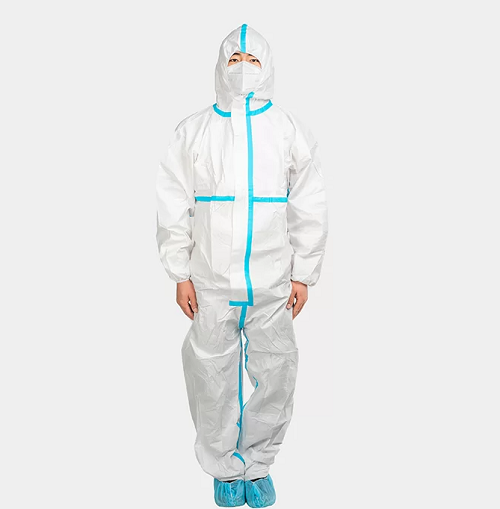Introduction of protective clothing
Medical protective clothing refers to the protective clothing used by medical personnel (doctors, nurses, public health personnel, cleaning personnel, etc.) and people entering specific medical and health areas. Its function is to isolate germs, harmful superfine dust, acid-base solution, electromagnetic radiation, etc., to ensure the safety of personnel and keep the environment clean. This medical protective clothing includes all kinds of clothing specially worn in medical environment.
This protective clothing refers to the clothing worn by personnel who enter special areas such as medical first aid, infectious disease areas, and electromagnetic radiation areas.
Because this protective clothing is mainly used in infected areas, this medical protective clothing is a disposable protective clothing according to its service life.
Protection is the most important performance requirement for medical protective clothing, mainly including liquid barrier, microbial barrier and barrier to particulate matter.
According to the material
The material of this protective clothing is mainly coated and laminated fabrics to enhance the impermeability of the material, and it is used for protective clothing materials that are used in harsh environments. The coated fabric is processed by coating, and the surface is sealed by the coating agent, which has anti-permeability. The hydrophilic groups in the coating or the microporous structure formed by special methods ensure the moisture permeability of the fabric. Laminated fabrics are made by laminating fabrics with a special film. Since the micropore diameter of the main membrane of the fabric is much smaller than the diameter of water droplets, it can prevent the penetration of blood, body fluids, etc., the high porosity of the micropores is larger than the diameter of water vapor molecules, and water vapor molecules can pass through freely, so the moisture permeability is better.
Liquid barrier property means that medical protective clothing should be able to prevent the penetration of liquids such as water, blood, alcohol, etc., and have a hydrophobicity of 4 or above to avoid contamination of clothes and the human body. Avoid infecting the virus carried by the patient's blood, body fluids and other secretions to the medical staff during the operation.
The non-woven protective clothing materials of this protective clothing are basically disposable. Usually non-woven protective clothing has better protection than machine-made materials. In addition to the specifications and safety requirements of the material itself, the performance of medical protective clothing mainly includes protection, comfort, physical and mechanical properties, etc.
Disposal of protective clothing
Since this protective clothing is mainly used when the environmental infection is severe and when entering the infected area, this protective clothing blocks bacteria and viruses. Therefore, the outer surface of the protective clothing may be stained with bacteria and viruses, and special attention should be paid to the handling of the protective clothing to avoid cross-infection caused by improper handling of the protective clothing.
This disposable protective clothing is discarded after use without disinfection and washing. It is convenient to use and can avoid cross-infection. However, the degradation of disposable materials is slow and it is easy to cause environmental pollution. It is usually used in surgical gowns and isolation gowns that require high protection. this type. This protective clothing can be purchased in bulk for more cost-effective.
